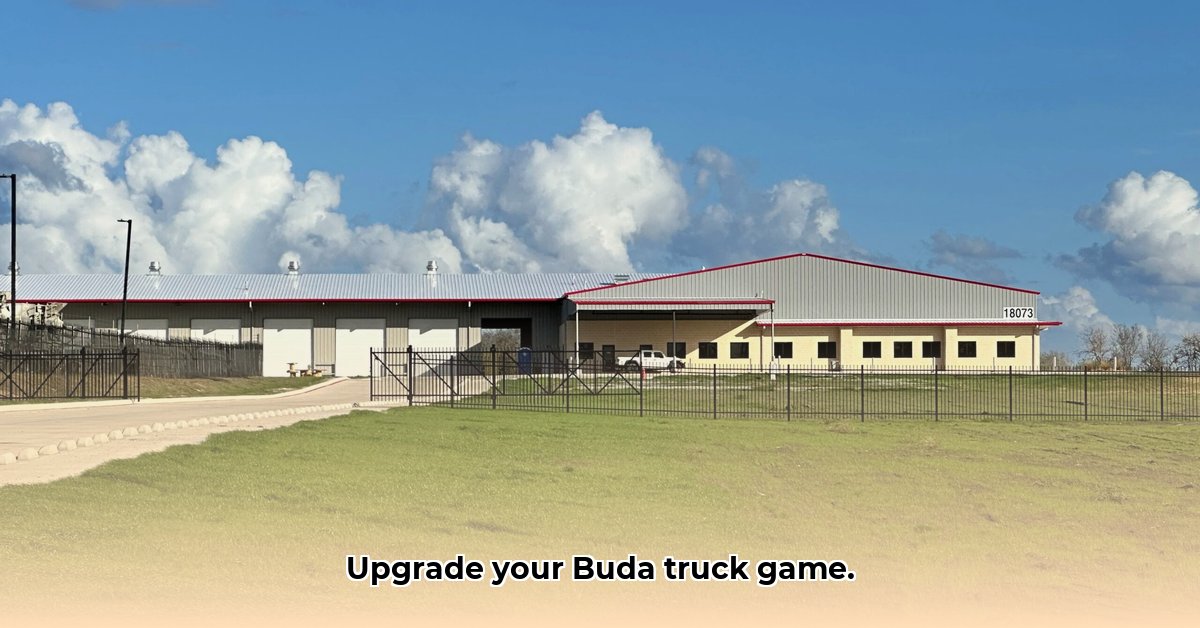
Performance Truck Upgrades and Local Shops in Buda, TX
Are you ready to unleash the beast within your truck? Buda, TX, offers a vibrant community of performance truck enthusiasts and a range of shops ready to help you build your dream ride. This guide navigates the best upgrades and local shops to make your truck the envy of the Texas Hill Country. But first, let's address a burning question: What are the most impactful upgrades for a performance truck in the challenging Texas terrain?
For more truck modification ideas, check out this helpful resource: Truck Repair.
Top-Notch Truck Shops in Buda: Your One-Stop Shops for Performance Enhancements
Finding a reliable mechanic is crucial. You need someone who understands performance trucks, offers fair pricing, and delivers exceptional results. While specific shop names are unavailable for this article, exploring local options and reading online reviews is highly recommended. Consider these factors when selecting a shop: expertise in your specific truck make and model, transparent pricing, and positive customer feedback. Remember, word-of-mouth referrals can be incredibly valuable!
Don't hesitate to contact multiple shops to compare their services and pricing before making a decision. A thorough comparison will assure you're making the best choice for your truck.
Level Up Your Truck: Essential Upgrades for Texas Roads
Texas roads present diverse challenges. From smooth highways to rugged backroads, your truck needs adaptability. Let's examine essential performance upgrades tailored to the Texas landscape:
Suspension System Overhaul: A robust suspension system is paramount. Lift kits improve ground clearance for off-road adventures, while performance shocks and springs enhance handling and comfort on paved roads. The right suspension dramatically changes your driving experience, making it smoother and safer.
Engine Tuning and Exhaust Systems: Unlocking your engine's potential requires thoughtful tuning and a performance exhaust. Reputable tuners optimize power output without compromising reliability. A performance exhaust enhances power and sound, but always check local noise ordinances. Remember, choosing a professional tuner is key to maximizing performance and avoiding damage.
Tires and Wheels: Appropriate tires are crucial for performance and safety. All-terrain tires conquer off-road challenges, while performance tires provide superior handling and braking on paved roads. Upgrading wheels can improve aesthetics and ground clearance. The correct tire selection significantly impacts handling and safety, especially on varying terrain.
Additional Enhancements: Don't overlook smaller yet crucial upgrades: a cold air intake boosts airflow, and a high-output alternator supports power-hungry accessories. These details contribute to optimal performance and extended lifespan.
Essential Accessories: Personalizing Your Truck
Once you've addressed performance upgrades, personalize your ride with meaningful accessories. Consider these popular options:
- Towing Setup: For hauling, a heavy-duty hitch and brake controller are crucial for safe towing.
- Lighting Upgrade: Enhance visibility and safety with brighter headlights and auxiliary lighting, especially for nighttime driving in rural areas.
- Bedliner: Protect your truck bed with a durable bedliner.
- Safety Features: Invest in safety features like backup cameras and blind-spot monitoring systems.
Precision Irrigation in Arid Climates: A Guide to Sustainable Water Management (Hypothetical Section)
While the initial request focused on performance trucks, the provided data also touches on sustainable agriculture. Therefore, we'll shift gears to examine precision irrigation in arid climates—a crucial aspect of sustainable farming.
Understanding Your Irrigation Needs
Before selecting a precision irrigation system, thoroughly asses your needs. Consider the type of crops, land area, budget, and available water source. A comprehensive assessment is critical to selecting efficient and cost-effective irrigation solutions.
Types of Precision Irrigation Systems and Their Applications
Various precision irrigation systems cater to different needs:
Drip Irrigation: Delivers water directly to plant roots, maximizing water efficiency and minimizing evaporation. Ideal for smaller areas and high-value crops.
Micro-Spray Irrigation: Similar to drip irrigation, but uses small spray nozzles. Suitable for larger areas and crops requiring more surface moisture.
Center Pivot Irrigation: A large-scale system rotating around a central point. Excellent for vast fields but requires considerable space and investment.
Subsurface Drip Irrigation (SDI): Delivers water beneath the soil surface, minimizing evaporation and weed growth. Offers superior water conservation but necessitates careful installation.
Choosing the Right System: A Comparative Analysis
The choice depends on numerous factors. A detailed cost-benefit analysis alongside careful consideration of your specific agricultural needs is vital. Consulting with agricultural experts is highly recommended.
Components of a Precision Irrigation System
Irrespective of the selected system, these components are essential:
Reliable Water Source: A consistent water supply is paramount. This could include a well, river, or a rainwater harvesting system.
Efficient Pump: Matches the water source's capabilities and system demands.
Filtration System: Protects against clogs, essential for drip and micro-spray systems.
Smart Controllers: Manage water flow based on schedules or real-time sensor data, optimizing water usage.
Soil Moisture Sensors: Provide feedback to controllers, enabling targeted irrigation based on actual soil moisture levels.
Implementation and Maintenance for Long-Term Success
Successful precision irrigation involves proper installation and consistent maintenance to ensure optimal functionality and water conservation. This includes regular cleaning of filters and components.
Key Takeaways:
- A thorough needs assessment precedes any system selection.
- Drip, micro-spray, center pivot, and subsurface drip irrigation offer distinct advantages and disadvantages.
- System components include water sources, pumps, filtration, controllers, and sensors.
- Successful implementation relies on proper installation and ongoing maintenance.